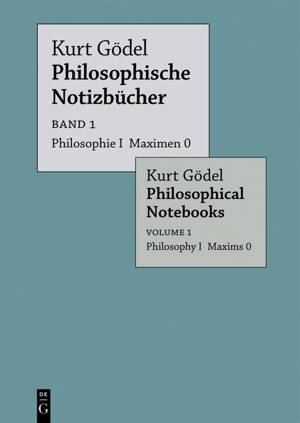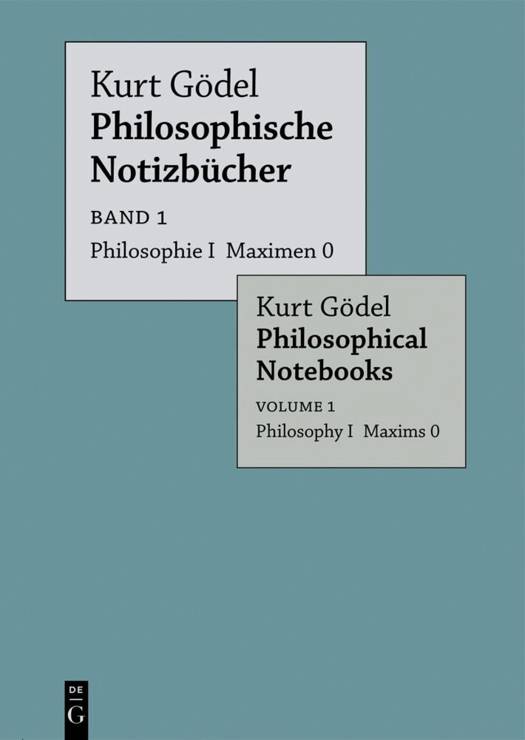
- Afhalen na 1 uur in een winkel met voorraad
- Gratis thuislevering in België vanaf € 30
- Ruim aanbod met 7 miljoen producten
- Afhalen na 1 uur in een winkel met voorraad
- Gratis thuislevering in België vanaf € 30
- Ruim aanbod met 7 miljoen producten
Zoeken
Philosophie I Maximen 0 / Philosophy I Maxims 0
Philosophie I Max 0
Kurt Gödel
Hardcover | Duits, Engels
€ 101,45
+ 202 punten
Omschrijving
Over a period of 22 years (1934-1955), the mathematician Kurt Gödel wrote down a series of philosophical reflections, the so-called Philosophical Remarks (Max Phil). They have been handed down in 15 notebooks written in Gabelsberg shorthand. The first notebook contains general philosophical reflections. Notebooks two and three consist of Gödel's individual ethics. The notebooks that follow clearly show that Gödel had designed a philosophy of science in which he placed his discussions of physics, psychology, biology, mathematics, language, theology, and history within the context of a particular metaphysics. For the first time, the Kurt Gödel Research Center of the Berlin-Brandenburg Academy of Sciences is preparing a complete, historical-critical edition of Gödel's philosophical notebooks. A volume will published each year as a part of this edition. Volume 1, which Gödel entitled "Philosophy I Max 0," covers Gödel´s own philosophical reflections as well as those of other authors that were important to him. These were placed by Gödel at the beginning of his overall philosophical project. The introduction of the editor Eva-Maria Engelen provides an overview of this particular body of work.
Specificaties
Betrokkenen
- Auteur(s):
- Vertaler(s):
- Uitgeverij:
Inhoud
- Aantal bladzijden:
- 241
- Taal:
- Duits, Engels
Eigenschappen
- Productcode (EAN):
- 9783110583748
- Uitvoering:
- Hardcover
- Afmetingen:
- 175 mm x 248 mm
- Gewicht:
- 542 g

Alleen bij Standaard Boekhandel
+ 202 punten op je klantenkaart van Standaard Boekhandel
Beoordelingen
We publiceren alleen reviews die voldoen aan de voorwaarden voor reviews. Bekijk onze voorwaarden voor reviews.











